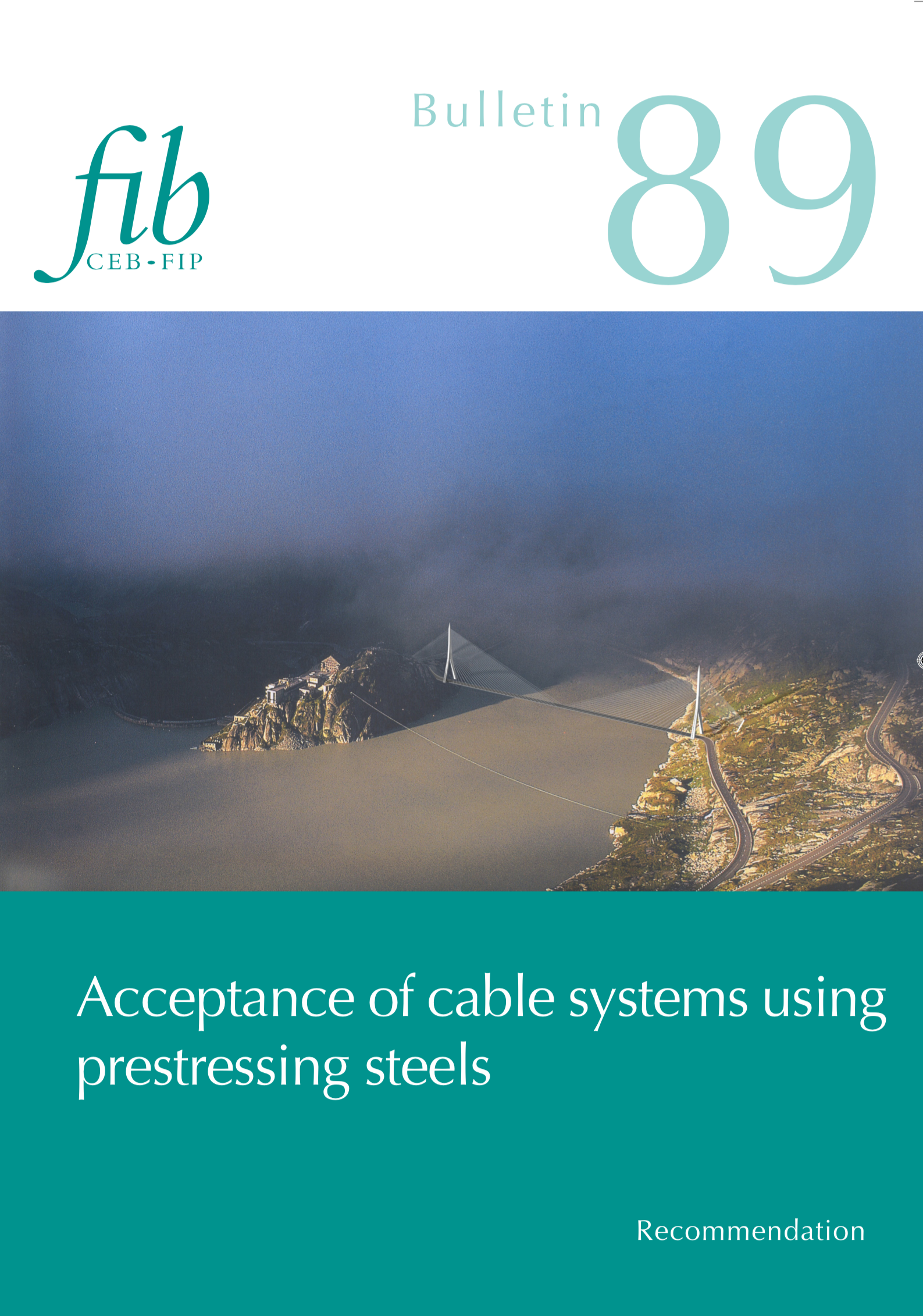Cable-stayed structures have become increasingly popular over the last 30 years and have been used in all parts of the world. Modern cable-stayed bridges have a history of over 50-years and have been constructed with span lengths ranging from 15 m to over 1000 m. Many long span cable-stayed bridges have been built for railway and highway traffic applications. Stay cables have also been used on pedestrian structures, many of which are architecturally striking and have become landmark structures. There is growing use in building structures, particularly for cable-supported roofs.
Most of the cable supported structures have been in the form of cable-stayed bridges; but in recent years, extradosed bridges have seen increased popularity among the designers. Led by the experience in Japan, more than 200 extradosed bridges have been constructed worldwide in the past 15 years.
The first edition of these fib recommendations was published as fib Bulletin 30 in 2005 and was the first specification published by fib for stay cable systems. This new bulletin has been updated based on Bulletin 30 with the aim to reflect the current state of the art and encompass the latest knowledge in cable systems. In addition, it has been the aspiration of Commission 5 and Task Group 5.5 to harmonize the guidance in this updated bulletin with other stay cable recommendations from around the world, including those from Europe, Japan and the USA.
This new bulletin is intended to supersede and replace fib Bulletin 30. It is recommended that it be used in lieu of fib Bulletin 30 for all future cable supported applications.
The updated bulletin introduces several significant enhancements to the specifications:
- These recommendations are applicable to both stay cable and extradosed cable applications. In the past, there has been some debate over the boundary between cable-stayed and extradosed bridges. This bulletin presents a new continuous approach valid for both.
- A completely new testing requirement to assess the performance of cable systems under bending fatigue, including both anchorages and saddles, if applicable, has been added.
- Testing requirements for saddle systems have been reformulated. In addition to the bending fatigue test noted above, new testing procedures for stay cable saddles with isolated tensile elements are introduced. This includes tests for saddle axial fatigue, friction and tensile testing, and determination of the effective saddle friction coefficient.
- Expanded system qualification, including requirements for both stay cable and extradosed applications. Includes new provisions for MTE qualification and additional load transferring connection devices. Minimum number of tests is specified for each.
- A new in-situ damping measurement test has been added to verify the actual damping ratio of the damping devices installed. By testing on site, selected cables may be excited to vibrate without and with the damping devices so that the observed vibration behaviour can be compared to the specified value.
Other revisions have been made to reflect the current state of practice:
- Expanded quality control testing requirements
- Inclusion of epoxy-coated prestressing steel as a protection layer. Previous recommendations only considered zinc coatings. Specifications for epoxy coating material are given.
- Requirements for stainless steel components such as pipes, caps and plates
- Updated guidance for designing lightning protection systems
- Detailed recommendations for different levels of inspection of cable systems, including: initial, routine, detailed and exceptional inspections
- An updated list of references, relevant standards, and extended literature
I would like to express my sincere thanks to Dr. Antonio Caballero and Professor Hiroshi Mutsuyoshi, co-convenors of Task Group TG5.5, and to Werner Brand, TG5.5 secretary,
for their leadership in this effort. I would also like to acknowledge the contributions of all the members of Task Group 5.5 whose dedication and hard work made this important standard possible. I also express my appreciation to the several experts who have dedicated significant time to review and improve these recommendations, in particular Dr. Hans-Rudolf Ganz and Mr. Gordon Clark.
Theodore L. Neff
Chairman of Commission 5 "Reinforcements"
